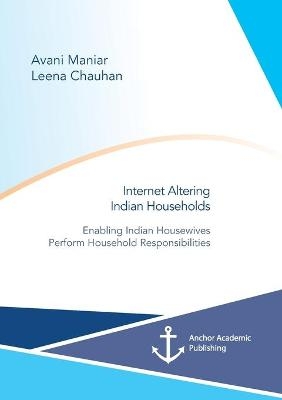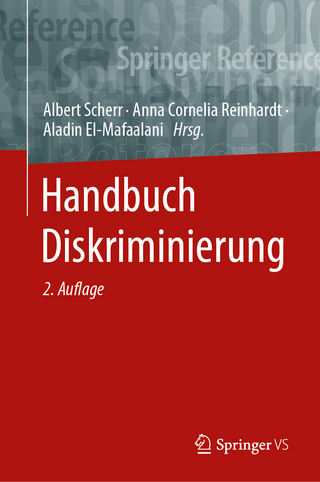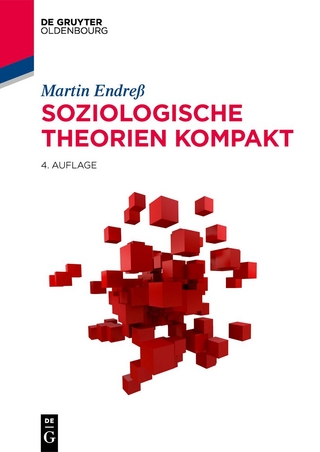
Internet Altering Indian Households
Anchor Academic Publishing (Verlag)
978-3-96067-225-8 (ISBN)
Amongst its boundless uses, women have chosen to use internet for maintaining a healthy life style. According to the Women Web Study Report June 2013 by Google India, there were total of 150 Million internet users in India and among them 60 million were women. Furthermore, it elaborated that half of the internet users agreed that internet surfing influenced their decision before purchasing a product. The interesting finding was that the eighty percent of women recommended their purchase to other women whereas twenty five percent of them shared their online purchasing experience online. These findings highlight the use of the internet among Indian women.
The Indian patriarchal culture has always associated technology with men. Its usually the men of the house who purchase and operate "technology". But Internet has proven to be quite different - over the years women in Indian society have grown affinity for it. They are using internet with utmost ease for various purposes.
The content in this book throws light on how married Indian women are using internet to bring creativity, efficiency and a "newness" to their mundane household responsibilities. How Internet is being used for their kitchen management, child care, socialization and entertainment. It forces our society to reflect on how action, computer and internet training can positively impact Indian married women.
Internet supports economic development of Indian women by facilitating e-commerce and e-learning. The training for using the internet and computer may enable women to make the best use of the internet to perform their household responsibilities The suggestions provided by the married women highlight that government and welfare agencies should promote and initiate computer and internet training programs and projects for women. This step for digital inclusion will lead towards women -empowerment and uplift their status in their family, society, and nation at large. This digital literacy and inclusion initiatives may lead women to gain empowerment and further help in upliftment of their status in family, society, and nation. Them. This book is an eye opener for all of us to think how technology can be used or development, upliftment, and empowerment of socially backward gender in a society.
Text sample:
Chapter APPROACHES TO MEASUREMENT:
The data was collected from three hundred and twenty-five married women of Vadodara city who had children and were using the internet. It was collected from August 2016 to March 2017. Key persons and institutions were identified covering all zones of Vadodara city to collect the data. They were identified from residential areas, schools, colleges, organizations, public and private offices, corporate offices, social groups, paediatrics, children hobby centers where married women can be approached. These women were residents, employers, employees, relatives or friends of employees.
Schools were approached to reach out to the mothers. An official permission was taken from school authorities to collect the data from their schools. Large numbers of married women were identified through schools; they were either teachers or mothers of students studying in that particular schools. Names and addresses of the potential sample were acquired from friends, colleagues, and neighbors by using the snowball sampling technique. The questionnaires were distributed to the married women.
The data was also collected through online method. The questionnaire was uploaded on "Google forms" and a web link was created to fill it up. The web link was shared via email and WhatsApp. The response rate through online mode was very low. Only fourteen forms were filled online. Married women preferred filling up the form offline since the online mode was time taking due to the length of the questionnaire.
In-depth interviews were conducted with married women who were comfortable talking rather than writing .The other purposes were to understand the roles and responsibilities of married women at their home and workplace. Their efforts to improve themselves for performing their responsibilities at home and workplace. Their sources of help available and used by them to perform their responsibilities at home and workplace. Effect of media in their decision making related to their household responsibilities.
The role of the internet in acquiring knowledge and problem-solving abilities of selected women.
Effect of internet usage for performing household responsibilities on their lifestyle.
Problems faced by them while using the internet.
Interview method was also used to seek suggestions of married women of Vadodara city to promote internet usage among other women.
Prior appointments from respondents were taken for conducting interviews. Respondents were informed about the purpose of interviewing them, while taking the appointments. This helped them to understand the topic and prepared them for the interview. The place of the interview was decided as per the convenience of respondents, it was either their home or workplace. The duration of the interview varied between 20 to 50 minutes. Respondents were taking more interest in providing the responses as the topic was related to them and of their interest. Interviews were recorded on the voice recorder and handwritten notes were also taken for convenience.
| Erscheinungsdatum | 08.12.2020 |
|---|---|
| Sprache | englisch |
| Maße | 155 x 220 mm |
| Gewicht | 253 g |
| Themenwelt | Sozialwissenschaften ► Soziologie ► Allgemeine Soziologie |
| Sozialwissenschaften ► Soziologie ► Gender Studies | |
| Schlagworte | Digital Literacy • eLearning • India • Internet Learning • Social Media |
| ISBN-10 | 3-96067-225-X / 396067225X |
| ISBN-13 | 978-3-96067-225-8 / 9783960672258 |
| Zustand | Neuware |
| Haben Sie eine Frage zum Produkt? |
aus dem Bereich


